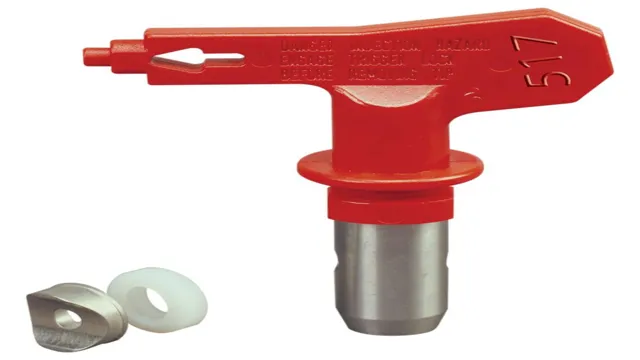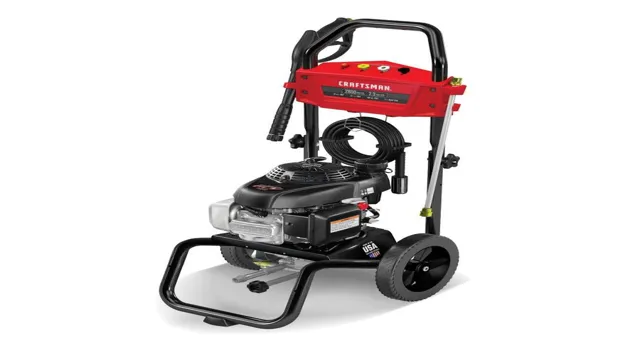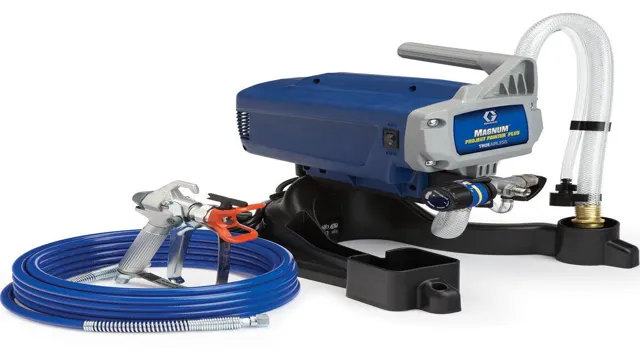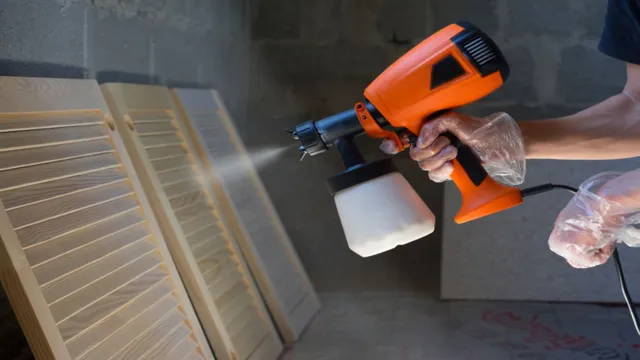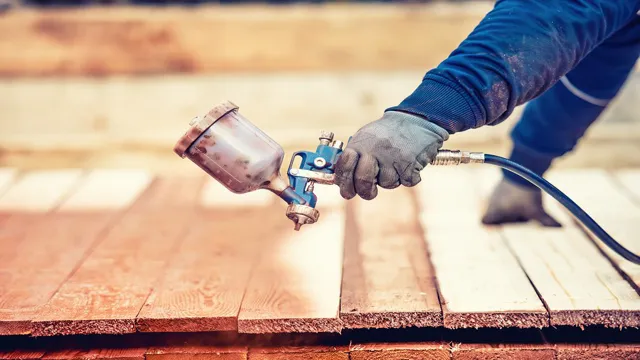Can I Use a Paint Sprayer for Interior Walls? Expert Tips for Painting Walls with a Sprayer

Are you tired of the tedious process of painting your interior walls with a brush and roller? Or maybe you’re just ready to upgrade your DIY game to achieve a flawless, professional-quality finish. Whatever the reason, using a paint sprayer for interior walls is a game-changer. Think of it like upgrading from a bucket and spade to a bulldozer.
With a paint sprayer, you can cover large areas quickly and easily, leaving a smooth, even coat without all the brush strokes and roller marks. It’s no wonder that professional painters have been using sprayers for years. But before you dive straight in, there are a few things to consider.
Choosing the right sprayer for your needs, preparing the walls properly, and ensuring a safe and controlled spraying area are just a few of the important steps to take. In this blog post, we’ll guide you through everything you need to know about using a paint sprayer for interior walls. From picking the perfect sprayer to tips and tricks for achieving a flawless finish, we’ve got you covered.
Say goodbye to the frustrating and time-consuming process of traditional painting methods and hello to a faster, easier, and more professional way of painting your walls.
Overview of Paint Sprayers
Yes, using a paint sprayer for interior walls is definitely an option and can save you time and effort. However, it is important to note that using a paint sprayer may not be the best choice for every situation. Paint sprayers work by pushing paint through a nozzle to create a fine mist that coats surfaces evenly.
This is great for large surfaces like walls, but it can also create a messy and uneven finish if not used correctly. If you are planning to use a paint sprayer for your interior walls, make sure to practice on a small area first to get comfortable with the equipment. Additionally, it is important to use the right type of paint and ensure proper ventilation for safety.
Overall, using a paint sprayer for interior walls can be a great way to save time and effort, but it’s important to weigh the pros and cons before making that decision.
Pros and Cons of Using a Paint Sprayer
A paint sprayer can be a game-changer when it comes to painting a large surface area. It allows you to cover a lot of ground quickly and with ease. However, there are pros and cons to using one.
On the positive side, paint sprayers offer a smooth and even finish, reducing the need for touch-ups. They are also great for intricate details and hard-to-reach areas. On the other hand, they tend to waste more paint and require more preparation and cleanup.
Additionally, they can be trickier to use and take some practice to master. Despite the drawbacks, if you have a large painting project, a paint sprayer may be the perfect tool to make it easier and more efficient. Just make sure to weigh the pros and cons before deciding if it’s the best option for you.

Choosing the Right Paint Sprayer
If you’re looking to speed up your painting process, a paint sprayer can certainly help. But can you use it for interior walls? Absolutely! In fact, a paint sprayer is an ideal option for large interior projects like walls and ceilings. Not only does it save you time, but it also creates a smooth, even finish that can be difficult to achieve with traditional rollers and brushes.
When choosing the right paint sprayer for your project, consider the type of paint and primer you’ll be using, as well as the size of the job and your level of experience. Look for a sprayer that is easy to clean and maintain, with a good spray pattern and adjustable nozzle to control the flow of paint. With the right tool and some practice, you’ll be able to transform the look of your interior space in no time.
Considerations when selecting a paint sprayer
Choosing the right paint sprayer can be overwhelming, especially if you’re not familiar with the different types available in the market. However, it’s crucial to choose the right one that matches your project’s requirements. First and foremost, consider the type of paint you’ll be using: is it thick or thin? This is important because not all sprayers can handle both types.
Next, think about the size of your project and the amount of paint you’ll need. For larger projects, an airless sprayer would be the best option, while smaller projects can be accomplished with handheld sprayers. Finally, consider the amount of experience you have with spray painting.
If you’re a beginner, it’s best to opt for a sprayer with adjustable pressure for greater control. By keeping these factors in mind, you’ll be able to select the most suitable paint sprayer for your project and achieve professional results.
Preparing to Paint with a Sprayer
Wondering if you can use a paint sprayer for your interior walls? The answer is yes! Paint sprayers are a great tool for painting large surfaces quickly and efficiently. However, there are several steps you need to take to prepare before you start painting. First, make sure you have all the necessary equipment like a paint sprayer, paint materials, and protective gear.
Then, prepare your surface by cleaning it thoroughly and taping off any areas you don’t want to paint. Next, practice on a scrap piece of cardboard or wall to get the hang of using the paint sprayer and adjust the settings as needed. Finally, start painting! Remember to move the sprayer in even strokes and keep a consistent distance from the wall for a professional and seamless finish.
With these steps, you’ll be able to use a paint sprayer for your interior walls with ease and achieve the perfect look for your home.
Steps to take before using a paint sprayer
Before using a paint sprayer, it’s essential to prepare the surfaces you want to paint. Any debris, dust, or other materials on the surface can cause flaws in your finish, so it’s vital to clean and sand surfaces properly. Make sure to wear safety gear such as goggles and a mask to protect yourself from any dust or fumes generated by sanding.
Once you’ve finished sanding, wipe the surface clean and let it dry. Cover any areas that you don’t want to paint with masking tape and plastic sheeting. Next, mix your paint according to the manufacturer’s instructions.
If you’re using an oil-based paint, you can thin it with mineral spirits, but be sure never to thin latex paint with anything other than water. Now that you’ve prepared the surface and paint, you’re now ready to use your sprayer.
Tips for Using a Paint Sprayer on Interior Walls
Yes, using a paint sprayer for interior walls can save you a lot of time and effort compared to using a brush or roller. However, there are certain considerations to keep in mind. First, make sure to cover floors and furniture with drop cloths, as the overspray can be difficult to clean up.
Additionally, ensure that the walls are properly cleaned and repaired before starting, to avoid any blemishes or imperfections. It’s also important to choose the right type of paint, as not all paints are suitable for spraying. Lastly, practice makes perfect when it comes to using a paint sprayer, so start with a small area and adjust the settings as needed before tackling a larger project.
With these tips in mind, you can achieve a smooth and professional-looking finish using a paint sprayer on your interior walls.
Best practices for achieving a smooth finish
Paint sprayers can be a game-changer when it comes to painting interior walls, but there are a few tips and tricks that can ensure you achieve a smooth finish. First and foremost, make sure you practice on a cardboard or scrap material before you start painting the walls. This will give you a feel for the sprayer and help you adjust the settings to get the right pressure and spray pattern.
It’s also important to mask off areas you don’t want to paint, like trim, ceiling, or floors. This will ensure clean lines and prevent overspray. When you start painting, keep the sprayer moving at a consistent speed and maintain a consistent distance from the wall.
Don’t rush or linger on one spot as this will cause uneven coverage. Finally, finish with a roller or brush to blend any unevenness and achieve a professional-looking result. By following these tips, you can save time and effort while achieving a beautiful finish on your interior walls.
Conclusion
In conclusion, while using a paint sprayer for interior walls may seem like a time-saving option, it’s important to consider factors such as skill level and the potential for overspray. Just like any project, always weigh the pros and cons before taking on the task. Don’t be afraid to get creative, but remember that when it comes to painting, sometimes the traditional method of a roller and brush may be the best option for achieving a flawless finish.
Happy painting!”
FAQs
What is a paint sprayer and how does it work for interior walls?
A paint sprayer is a tool that uses pressured air to atomize and spray paint on a surface. It works by releasing paint in small droplets, creating a fine mist that covers a large area quickly and evenly.
Is it better to use a paint sprayer or a roller for painting interior walls?
While both methods have their pros and cons, a paint sprayer offers a faster application and a more fine-tuned finish that can save time and effort. A roller, on the other hand, provides better coverage and is ideal for textured or uneven walls.
What are the advantages of using a paint sprayer for interior walls?
Using a paint sprayer for interior walls allows for a clean and even distribution of paint, which results in a smooth and consistent finish. It also covers large areas quickly and with less mess compared to other methods.
Can a novice painter use a paint sprayer for interior walls?
Yes, a novice painter can use a paint sprayer for interior walls with proper instructions and guidance. However, it may take more practice and patience to achieve good results.
What type of paint is suitable for a paint sprayer for interior walls?
Typically, latex paints and some oil-based paints are suitable for paint sprayers. However, it is best to check the manufacturer’s instructions or consult with a paint specialist to ensure the paint is compatible with the sprayer.
Do I need special equipment to use a paint sprayer for interior walls?
Yes, you will need a paint sprayer, compressed air or an electric source, and a mask or respirator to protect yourself from paint particles. It is also recommended to have drop cloths, tape, and other painting tools.
How do I maintain and clean my paint sprayer after using it for interior walls?
To clean your paint sprayer after use, you should first release the remaining paint and then flush it with water or paint thinner, depending on the type of paint used. It is essential to follow the manufacturer’s instructions for proper maintenance and storage of the equipment.

